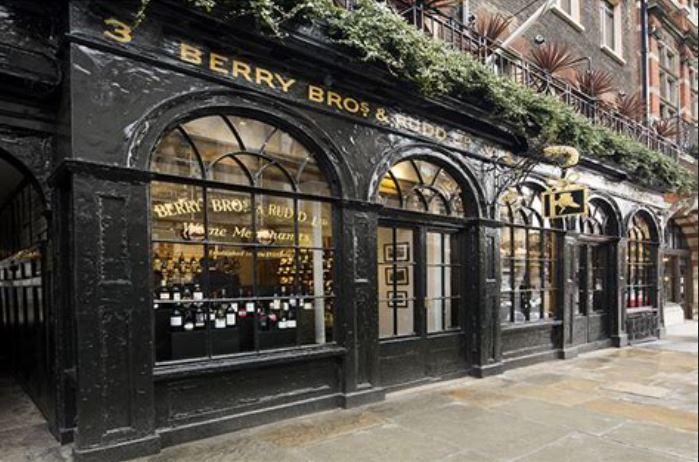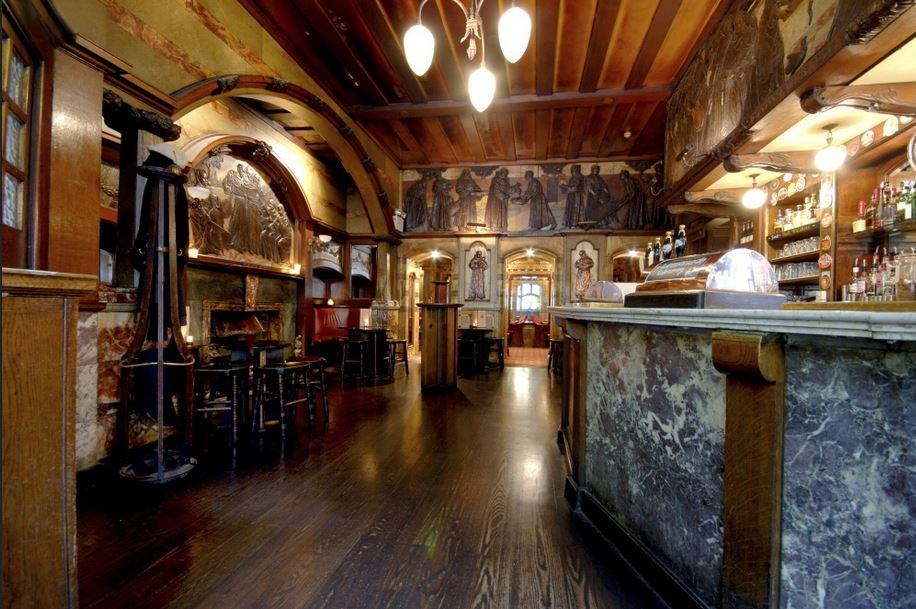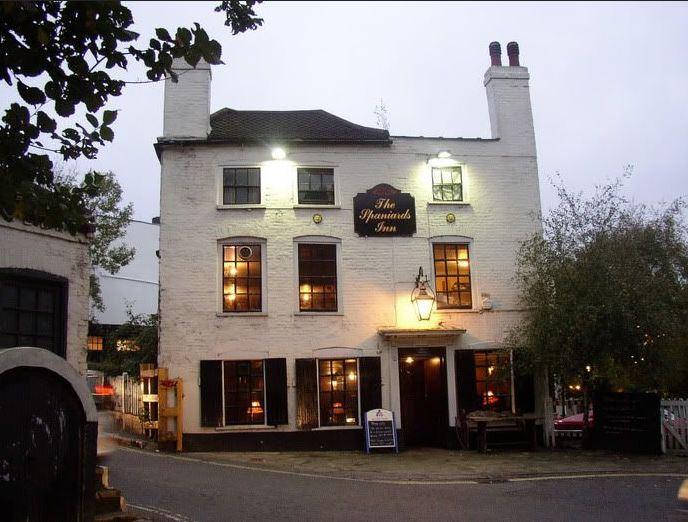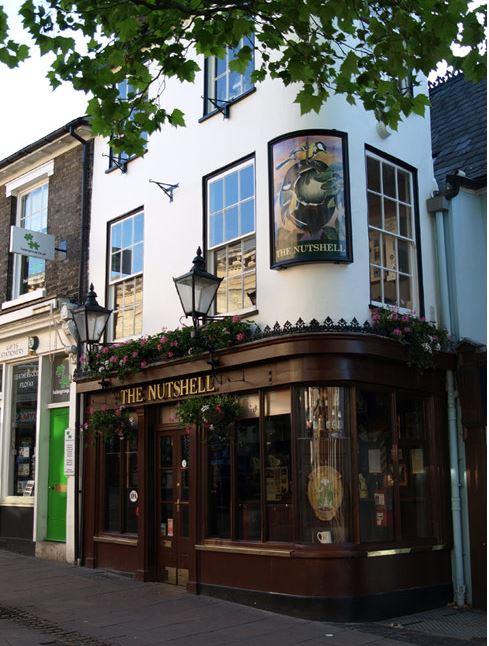I'd like to suggest a topic, word it how you will: does the Labour Party actually work for the interests of the labouring person?
A genuine question - is there a plan for a thriving British economy rather than getting votes for benefits (and soft jobs for professional pols)?
Can Labour get away from the infighting and present a manifesto that is a credible alternative to the globalism foisted on us by both Conservatives and New Labour? Democratic and therefore not EU, and aiming at a sustainable economy, increased self-sufficiency in essential food and power, as the world heads for a long slump and peak cheap energy has passed?
Or is it just a case of either:
(a) one lot popping in when the other pops out, like the little man and woman in the weather house?
(b) Tweedledum and Tweedledee ripping the country into two, instead of saving it?
Thursday, September 06, 2018
Monday, September 03, 2018
Fire!
Funny how buildings go on fire at times when no-one is supposed to be there - late at night, weekends... and especially school holidays -
https://www.merseyfire.gov.uk/aspx/pages/reports/pdf/arson_in_schools.pdf
Glasgow's School of Art, near midnight on Friday 15 June 2018:
Liverpool's Littlewoods Pools building, Sunday 2 September 2018:
Brazil's National Museum - same time as Liverpool:
There's now a database of fires in UK heritage buildings:
https://www.fireprotect.me.uk/fires2018.html
And then there are the textile warehouses that combust when there's a recession...
And in Birmingham (UK) a decade or two ago I seem to recall empty warehouses on the ring road that were listed buildings but stood in the way of some local authority development plan and - whoof! up they went in flames, nobody caught.
I suppose that if I composed a pamphlet titled "Arson for Fun and Profit" I'd be in trouble?
https://www.merseyfire.gov.uk/aspx/pages/reports/pdf/arson_in_schools.pdf
Glasgow's School of Art, near midnight on Friday 15 June 2018:
Liverpool's Littlewoods Pools building, Sunday 2 September 2018:
Brazil's National Museum - same time as Liverpool:
There's now a database of fires in UK heritage buildings:
https://www.fireprotect.me.uk/fires2018.html
And then there are the textile warehouses that combust when there's a recession...
And in Birmingham (UK) a decade or two ago I seem to recall empty warehouses on the ring road that were listed buildings but stood in the way of some local authority development plan and - whoof! up they went in flames, nobody caught.
I suppose that if I composed a pamphlet titled "Arson for Fun and Profit" I'd be in trouble?
Sunday, September 02, 2018
Is Ukraine to be the new Guernica?
 |
| Pic: South China Morning Post https://www.scmp.com/news/world/europe/article/2162391/ukraine-peace-plan-ice-after-pro-russian-rebel-leader-killed-cafe |
Last Friday (31.08.18) Alexander Zakharchenko, the leader of the "Donetsk People's Republic" (in eastern Ukraine) was killed in a bomb blast, along with his bodyguard. It is claimed that the killers, who are still being hunted, work for the Ukrainian security service.
Unlike in the western part of Ukraine, the population of Donetsk is predominantly Russian-speaking and/or of Russian descent. The breakaway state declared its independence four years ago, but so far has only been formally recognised by South Ossetia.
Under the 2015 Minsk II agreement, Ukraine, Russia, France, and Germany brokered a ceasefire and progressive demilitarisation. But the Russian Foreign Minister Sergey Lavrov has now cancelled ongoing treaty negotiations, claiming that the assassination is "an open provocation aimed at hindering implementation of the Minsk agreements" and linking it to the recent increase in US sanctions against Russia (announced 8 August) in the wake of the Skripal poisoning case in Britain, which has been blamed on Russia (denied by the latter and not yet forensically proven.)
The Kiev administration has failed to implement Minsk II and last year the United States was saying that the US did not wish to be limited by the agreement and suggested that Kiev should seek an accommodation directly with Moscow. Now the US special envoy for Ukraine has said that Washington could increase arms supplies to Kiev to buttress the country’s naval and air defence forces.
There is some evidence to suggest that the Ukraine has become a testing ground for Western weaponry. A "Ukraine based" firm called LimpidArmor has just announced the extension of a battlefield sensor system from fighter planes to tank warfare:
"The Land Platform Modernization Kit uses four cameras positioned strategically around the tank to create a seamless display of the environment surrounding the vehicle. Crew members wearing the HoloLens headgear would then be able to look around their environment without being hampered by the tank’s heavy armor while also not having to potentially expose themselves to enemy fire."
Although run by a Ukrainian, Mikhail Grechukhin, and conducting its research and development in Kiev, LimpidArmor's headquarters are in Walnut Creek, California. And in March this year the Ukrainian Defence Minister said that the US' supply of anti-tank missiles "opened the door for closer military cooperation in the face of Russian aggression."
Anti-Russian rhetoric was a major feature of Hillary Clinton's Presidential campaign in 2016, to the extent that Russians were getting nervous. When Trump won, it appeared to be a chance to normalise relations and shortly afterwards he was tweeting "Having a good relationship with Russia is a good thing, not a bad thing. Only ‘stupid’ people, or fools, would think that it is bad!" But since then the US President has seemed to row back, perhaps in response to the sustained campaign by the Democrats to paint Russia as in collusion with Trump to get him his election victory.
Doubtless there is a deep geopolitical game being played, but aside from Mrs Clinton's disappointed hopes one has to wonder what the real motivation may be. Is it really a cold, then a hot war with Russia - now no longer a Communist country, thanks to its people who have every reason not to wish the return of the Reds?
Or is it to rehearse weapons and tactics for war - perhaps by proxy - against another, still Communist, mightier and clearly expansionist potential foe: China? If so, the increasing sophistication of China's defence capabilities ought to give the three-dimensional chess players of Washington pause for thought - see for example this article on the PRC's development of next-generation unmanned aerial vehicles.
Could the "military-industrial complex" (as Eisenhower called it) be endangering us with its hubris?
 |
| http://www.museoreinasofia.es/en/collection/artwork/guernica |
_________________________
- https://www.scmp.com/news/world/europe/article/2162391/ukraine-peace-plan-ice-after-pro-russian-rebel-leader-killed-cafe
- https://sputniknews.com/world/201809011067667072-rusia-us-sanctions-dialogue/
- https://en.wikipedia.org/wiki/Minsk_II
- https://www.reuters.com/article/us-france-ukraine-idUSKBN19H19M
- https://thenewsrep.com/107709/ukrainian-company-testing-f-35-style-helmet-to-see-through-tanks-in-combat/
- https://translate.google.co.uk/translate?hl=en&sl=uk&u=https://uk.wikipedia.org/wiki/LimpidArmor&prev=search
- https://www.reuters.com/article/us-ukraine-defence/ukraine-says-weapons-decision-heralds-new-era-of-cooperation-with-u-s-idUSKCN1GE27X
- https://foreignpolicy.com/2016/09/07/the-kremlin-really-believes-that-hillary-clinton-will-start-a-war-with-russia-donald-trump-vladimir-putin/
- http://thesaker.is/chinas-dark-sword-uav-program/
Friday, August 31, 2018
FRIDAY MUSIC: Jazz from Big Easy Street, by JD
More jazz on the street, not all of it in New Orleans, but all of it the spirit of the music of the 'Big Easy' and including some fine clarinet playing by local legend Doreen Ketchens.
https://en.wikipedia.org/wiki/Doreen_Ketchens
https://en.wikipedia.org/wiki/Doreen_Ketchens
Sunday, August 26, 2018
The Public House, by Wiggia
The demise of the public house, one of the cornerstones of the British way of life, has been going on for some time now. In some ways it is inevitable: with so many other ways of entertaining available and the price differential for beers between pubs and supermarkets, there was always going to be a fall-out.















The more far-sighted of the breweries and the publicans saw the writing on the wall way back and started to cater for a larger clientele by offering food at a standard a long way from the sweaty cheese roll under a plastic dome that many pubs exhibited as their only food option, apart from pork scratchings and crisps. Many of these have thrived but position and investment are crucial to success: many pubs still fail as the footfall does not rise owing to the pub's poor location.
Since 2000 10,500 pubs have closed and the closure rate is currently running at roughly two a day, but the rate is slowing as the number of pubs that will never make a profit in the modern age dwindles.
The days of the public bar, the saloon bar and the snug may be no more, which is shame as those clandestine meetings in the quiet of the upmarket saloon bar were part of the life in those not so far off days; a lot of business was also carried out in those surroundings as well.
All that has gone, fortunately despite some sad closures most of the old coaching inns remain, maybe not in their original form but they remain nonetheless.
A wonderful example of the coaching inn is the George Inn in Borough High Street, Southwark. It is owned by the NT - I have no idea if that is a good thing for a pub - but it is run by Greene King and very successfully. It is Grade 1 listed, hence the NT involvement no doubt, and boasts the only galleried frontage on a pub in London, used in the past by players to entertain.
The list even today of historic watering-holes in London runs to a lot more than be encompassed here so I will just select a few that I have visited personally, even if it was a while back.
The Prospect of Whitby was built in the 1520s on the Thames in Wapping. It is now a trendy waterside area: Sir David Owen - of the Gang of Four fame! - lives a few doors away. I was taken there by my father originally when it had a curiosity factor but was not on the tourist trail and the view from the back terrace showed cranes and wharves; a very different scene now.
Pubs like the above would fill a book even today. Other areas have seen a decline for other reasons. When I left school, Fleet Street where I worked was awash with pubs: it seemed everyone connected with the Press spent most of their time in the myriad of pubs that existed there' Just round the corner at Smithfield market was an all-night pub so you could slake your thirst twenty-four hours a day - that one still exists, The Hope - but even Smithfield has changed. The Hope is no longer twenty-four hours and the other pubs are struggling, impacted by the way the market is run and by drink-drive laws. The death knell for the Fleet Street pubs sounded when Murdoch moved to Wapping and the rest of the papers followed.
I always liked The Red Lion in Crown Passage, St James. It is old, simple and in reality hasn’t a lot going for it: it does no food to speak of, the beer is and always has been average. It is the classic suits-at-lunchtime pub, a standing-room-only real pub in a fantastic location. It also has the advantage for those that imbibe of being round the corner from another institute, Berry Bros and Rudd the wine merchants, whose own premises are worth a look.
A good example of the work-related pub was the Kings Head. What was unusual about this place was not the rather boring building but its location in the middle of the giant Lathams wood yard on the River Lea, not far from where I lived as a youngster at the time. Lathams was a huge place. The barges would deliver great logs from the Thames ships that brought them here, and they would be planked on site; no more, though the yard is still there. To get to the pub you would walk through the giant sheds and avoid the cranes and fork lifts on the way. It closed in the nineties and was demolished for housing, along with some of the yard.
Other work-related pubs were slightly different, such as the Coach and Horses in Greek Street, Soho. This pub had the same landlord for 63 years, Norman Balon, and he revelled in the title of “the rudest landlord”, though the pub's fame in later years came from the almost permanent incumbent Jeffrey Bernard, Private Eye and Spectator columnist and permanently drunk - his life was immortalised by Peter O’Toole in the play Jeffrey Bernard Is Unwell. Balon's memoirs “You're Barred, You Bastards” followed. The place has now added "Normans" to its name and has a vegetarian and vegan menu !
The Lamb and Flag in Covent Garden used to be a favourite watering-hole for the market workers and previously Dickens and John Dryden but of course the market has moved so along with its rival pub the Cross Keys they cater for a very different clientele now with the revitalisation of the area. All markets had their own pubs not just in London but across the country. Many of the best pubs were associated with the markets they served.
The Black Friar pub was always a favourite of mine, simply because of the art nouveau interior In Queen Victoria Street the place itself has a strange wedge-shaped exterior backing onto the railway viaduct. In the sixties it faced demolition but a campaign led by Sir John Betjeman quite rightly saved the place. The sixties may have been a wonderful era to live through but it was an appalling era for the destruction of notable buildings.
There is no way I could include all my favourites, this is just a random dip into nostalgia. For London I will finish with one of the iconic pubs of North London, the Spaniards Inn in Hampstead. The area boasts a number of pubs frequented by artists, actors and the like, but the Spaniards is hard to miss as the road pinches into a bottleneck as you approach, as the old toll booth on the other side of the road deliberately restricts the traffic. There were attempts to demolish the toll house in the sixties, again, but fortunately it was resisted.
The pub has had famous clients such as Joshua Reynolds, Byron and Keats and famously Dick Turpin the highwayman. This area with the toll booth was a favourite place for highwaymen to hold up coaches and the tree from which those caught were hanged was only a couple of hundred yards from the Spaniards.
For many years my frequenting of pubs waned, I really didn’t visit many, and only when we moved to Long Melford in Suffolk did my interest perk up again. For reasons unknown and unexplained Melford is inundated with pubs, when we lived there nine existed and they still do, and there had been five more. How these were supported by a large village I have no idea but they were. Today the tourist industry keeps them going in the summer months as Melford is a big local attraction, but in the winter the lights are on but few people are buying. The Bull is the main pub, more like a hotel, and with its studded exterior it looks the part in this type of village - a village that has the presence of two stately homes on different sides of the green, another rare occurrence.
Though the Bull Hotel largely caters for the hotel side and weddings you are hardly short of alternatives in the village. The Black Lion can be seen here with the wonderful Holy Trinity church in the background.
The area is rich with pubs of all types. I will finish with one of those places everyone who comes across goes into. Up the road a few miles from Long Melford, Bury St Edmunds boasts what is reputed to be (and according to the Guinness Book of Records is, depending how you measure these things) the smallest pub in Britain, The Nutshell, with an interior of 15’x 7’. It is a tight squeeze for more than ten people. Its survival is almost guaranteed by its position, you can’t miss it, and the footfall is constant.
Whilst in Bury I cannot leave there and finish this without a mention of not a pub but the bar at the Theatre Royal. This theatre is the sole surviving playhouse from the Regency era and has again been saved and renovated. A wonderful place, much visited when we lived down the road. Amazingly the old bar which creaked under load and was so tight you had to order in advance has been replaced by Greene King who run the place and the NT who own this Grade 1 listed building. How the hell they got permission to put in this modern bar in such a historic building I have no idea, so I finish with something that has lost a historic bar but not its wonderful interior.
The public house may be going through a difficult time, more will be lost but I am sure the historic and the weird and wonderful will survive for a good few decades at least, and hopefully longer, so that future generations can come to appreciate a very important part of their social history.
Friday, August 24, 2018
FRIDAY MUSIC: Jim White, by JD
One of the comments beneath the first video here (Alabama Chrome) describes Jim White's music as "outsider art, bluegrass style" and that sounds to me like a very good assessment although it is not all bluegrass, there is a lot more to it than that.
His first album, released in 1997, had the strange title of "The Mysterious Tale of How I Shouted Wrong Eyed Jesus." A title like that is enough to make everyone sit up and take notice and some details of the effect the album had is explained lower down the page before the final video, 'Christmas Day' which is from the film and was also on the album No Such Place.
I first came across his music in 2001 when I bought the album "No Such Place." Can't remember how or why it came to my attention but I'm glad it did because the music is very different as well as being very good. The difficulty with choosing these songs was wondering what to leave out!
http://jimwhite.net/#section-home
In 2003 the BBC commissioned a documentary based on the 'Wrong Eyed Jesus' album. Why the BBC and not an American producer is a mystery. The film is currently on the BBC iPlayer (I think it is still available) https://www.bbc.co.uk/programmes/b0074qfn If not then it can be found on YouTube and it is worth watching.
"Searching for The Wrong-Eyed Jesus" is a captivating and compelling road trip through the creative spirit of the Southern U.S. Director Andrew Douglas's film follows "Alt Country" singer Jim White through a gritty terrain of churches, prisons, truck stops, biker bars and coal mines. This is a journey through a very real contemporary Southern U.S., a world of marginalised white people and their unique and home-made society. Along the way are road-side encounters with modern musical mavericks including The Handsome Family, Johnny Dowd, 16 Horsepower and David Johansen; old time banjo player Lee sexton; rockabilly and mountain Gospel churches - and novelist Harry Crews telling grisly stories down a dirt track.
It is a collage of stories and testimonies, almost invariably of sudden death, sin and redemption: Heaven and Hell, with no middle ground. And all the while a strange Southern Jesus looms in the background. Jim White reflects upon what it is about this baffling place that inspires musicians and writers, or as he puts it "trying to find the gold tooth in God's crooked smile."
It is an elegy to and a requiem for a world we have all lost.
His first album, released in 1997, had the strange title of "The Mysterious Tale of How I Shouted Wrong Eyed Jesus." A title like that is enough to make everyone sit up and take notice and some details of the effect the album had is explained lower down the page before the final video, 'Christmas Day' which is from the film and was also on the album No Such Place.
I first came across his music in 2001 when I bought the album "No Such Place." Can't remember how or why it came to my attention but I'm glad it did because the music is very different as well as being very good. The difficulty with choosing these songs was wondering what to leave out!
http://jimwhite.net/#section-home
In 2003 the BBC commissioned a documentary based on the 'Wrong Eyed Jesus' album. Why the BBC and not an American producer is a mystery. The film is currently on the BBC iPlayer (I think it is still available) https://www.bbc.co.uk/programmes/b0074qfn If not then it can be found on YouTube and it is worth watching.
"Searching for The Wrong-Eyed Jesus" is a captivating and compelling road trip through the creative spirit of the Southern U.S. Director Andrew Douglas's film follows "Alt Country" singer Jim White through a gritty terrain of churches, prisons, truck stops, biker bars and coal mines. This is a journey through a very real contemporary Southern U.S., a world of marginalised white people and their unique and home-made society. Along the way are road-side encounters with modern musical mavericks including The Handsome Family, Johnny Dowd, 16 Horsepower and David Johansen; old time banjo player Lee sexton; rockabilly and mountain Gospel churches - and novelist Harry Crews telling grisly stories down a dirt track.
It is a collage of stories and testimonies, almost invariably of sudden death, sin and redemption: Heaven and Hell, with no middle ground. And all the while a strange Southern Jesus looms in the background. Jim White reflects upon what it is about this baffling place that inspires musicians and writers, or as he puts it "trying to find the gold tooth in God's crooked smile."
It is an elegy to and a requiem for a world we have all lost.
Sunday, August 19, 2018
Alderney: secret WWII Channel Island nerve gas launching base?
Former London Times journalist Guy Walters' thriller "The Occupation" (2004) describes the development by the Nazis of missile launching batteries on the island of Alderney, which was just a few miles off the coast of NW France. According to the plot, when fully ready the site would be capable of saturation-bombing London at the rate of 300 rockets an hour.
The Daily Mail published an article on the Alderney fortress last year - "Hitler's British Death Island", 5 May 2017 - reporting that at least 40,000 imported slaves were killed in the process of constructing the site, which according to former military officers Richard Kemp and John Weigold was to target the southwestern coast of Britain from Weymouth to Plymouth with sarin-filled warheads.
However the newspaper's claims were swiftly contradicted by the Aldernese historian Trevor Davenport. Even the Mail's story admits that such a project would have been against the Germans' policy regarding V1 emplacements, as being more vulnerable to naval gunfire and commando raids than mainland installations.
The real underground tunnels can be seen here:
http://www.subbrit.org.uk/sb-sites/sites/a/alderney/water_lane_ho5/index.shtml
The Daily Mail published an article on the Alderney fortress last year - "Hitler's British Death Island", 5 May 2017 - reporting that at least 40,000 imported slaves were killed in the process of constructing the site, which according to former military officers Richard Kemp and John Weigold was to target the southwestern coast of Britain from Weymouth to Plymouth with sarin-filled warheads.
However the newspaper's claims were swiftly contradicted by the Aldernese historian Trevor Davenport. Even the Mail's story admits that such a project would have been against the Germans' policy regarding V1 emplacements, as being more vulnerable to naval gunfire and commando raids than mainland installations.
The real underground tunnels can be seen here:
http://www.subbrit.org.uk/sb-sites/sites/a/alderney/water_lane_ho5/index.shtml
Subscribe to:
Comments (Atom)